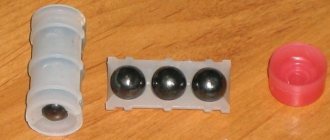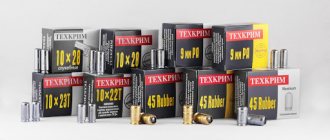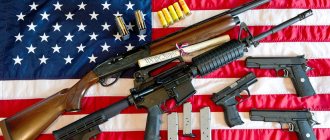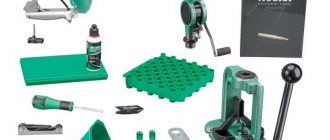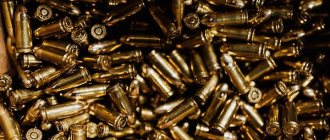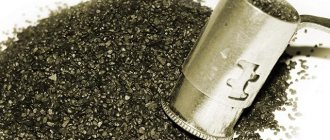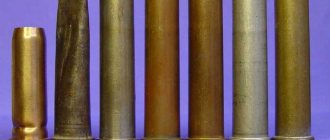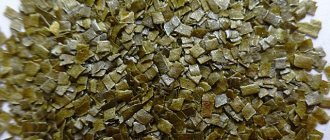Just recently, the Federation Council added amendments to the law “On Weapons” that now allow hunters and other shooters who own rifled weapons to legally reload cartridges. Owners of rifled rifles and carbines were waiting for these amendments with bated breath. After all, owners of smooth-bore weapons have already fully appreciated how much more profitable it is to reload cartridges than to purchase them in a store. Independent reloading of cartridges for rifled weapons was prohibited for a long time. We'll tell you what you need to properly and safely load ammunition.
Zhevelo capsule (d 5.6 mm) 6.40 per 1 piece. Capsule KV-16N (5.45x39) 2 for 1 pc. Capsule TsBO 3.20 for 1 piece. KV-22 capsule (d 6 mm) 5 per 1 piece. Capsule KV-209 (d 6 mm) 5 per 1 piece. Capsulator Auto-Prime XR LEE Precision (USA) 4,510 per 1 piece.
Select the necessary components for loading cartridges for rifled weapons
Why reload cartridges yourself?
In gun stores you can find cartridges for every taste and need, both for smooth-bore and rifled weapons, in a wide variety of calibers. So why do many hunters load their own ammunition? But because your own cartridges have a number of advantages over purchased ones:
- Financial benefit. By purchasing cartridge parts separately (case, primer, gunpowder, bullet), you save significantly and the ammunition costs you much less than ready-made ammunition from the store. Of course, if you compare a self-loaded cartridge and a Barnaul or Tula-made cartridge, the difference will be small. But if you compare its cost with the price of an American cartridge, then the savings will be much more noticeable.
- Optimal proportions of projectile and gunpowder mass. During the reloading process, the shooter independently chooses which attachment to use, so he receives the output product that is most suitable for the assigned tasks. If, for example, you are going to practice shooting at long distances, then you should not use a large load and a heavy projectile. But for hunting at a distance of 300 meters or more, both the weight and the weight of the projectile should be increased.
- Confidence. Surely everyone has heard terrifying stories of how homemade cartridges tore the chambers of guns. But let's be honest - only the shooter is responsible for the quality of the cartridge he personally loaded. And if during reloading he did everything according to the instructions, then the cartridge will work normally.
- Loading cartridges, both smooth-bore and rifled, has one goal - to reduce the cost of ammunition. But for this you will have to spend money on the necessary equipment, and the speed of the equipment will be low at first until you get the hang of it. Therefore, many people prefer not to bother and purchase factory-made cartridges, saving time. But this does not mean that there is no point in reloading; everyone chooses the most convenient option for themselves.
Independent loading of rifle cartridges (reloading)
The author of the article, as well as the publishers, publish this material solely for informational purposes. This text, either in whole or in part, is not a guide to reloading. The author and publishers are not responsible for any results from the use of the information below.
This article was written as follows. First, the process of loading the cartridge was photographed in detail. Then, a few months after this event, I began writing the article itself. When, after completing work on the main text, I started processing photographic materials, I realized that some of them required separate comments. As a result, the version of the article presented here consists of two parts. The first part is a description of the equipment process in general terms, in this form the article was originally written. The second part is a specific photo description of one of the options, namely how I loaded 30-06 cartridges. Both parts are strongly interconnected, however, due to a chronic lack of time and effort, I did not use cross-references in the text.
Part I
In America, a very high percentage of shooters equip themselves with cartridges, almost everyone who is interested in shooting more or less seriously. There are two reasons here. Firstly, the ability to achieve cartridge quality that is significantly superior to even the best factory options. This especially applies to the accuracy of the cartridge-weapon system, which, through the correct selection of components and attachments, can be brought to a level unattainable with mass-produced purchased ammunition. However, this incentive IMHO is not the main reason for most shooters to reload. The main driving force in this case is price. For comparison, you can load .223 Rem cartridges for about 15 cents/cartridge (bullet, powder, primer, and small things like lube, etc.). At the same time, the cheapest factory cartridges that I have ever purchased in this caliber are $5/20 pcs. Of course, cartridges also cost money and are not used forever. However, if you delve into catalogs of equipment components, you can use simple arithmetic to calculate the volume of shooting at which independent equipment will pay for itself. One final note on motivation: Most hunters in the US load their own cartridges due to the incredible number of ammunition options (bullet type and ballistics) that are open to them.
Now, actually, about the equipment itself. Obviously, in order to produce a cartridge from a cartridge case, the main actions will be replacing the used primer with a new one, weighing the gunpowder and seating the bullet. In fact, there are several more operations and their number depends on the individual requirements for the quality of the loaded cartridge.
The very first, absolutely mandatory action is cleaning the used cartridges (if the cartridges are freshly purchased, this action can be omitted). Clean the sleeves in a vibrating vessel (tumbler), mixing them with a powder somewhat reminiscent of polishing paste. Unfortunately, I cannot indicate the exact name of the powder or the method of its manufacture. An acquaintance at the shooting range claimed that in the absence of such a setup, you can wash the cartridges in a solution of acetic acid. Again, I don’t know the strength, and in general I haven’t personally tried this option, but I think that if the liner is visually noticeably cleaned, you can use it.
The keyword of the previous sentence “visually” smoothly leads to the next stage – cartridge case inspection. Obviously, it is almost impossible to test a repeatedly used cartridge case for strength. However, the presence of cracks, obvious deformations of the case body, or a characteristic expansion in the area adjacent to the bottom is one hundred percent grounds for rejection (neck bruises are not a problem, more on that later).
After all suspicious cartridges have been rejected, you can move on to the next stage - cartridge molding. Typically, this stage, especially on a single stage press, is combined with the removal of the primer - for this purpose, a pin is installed inside the resizing die, which removes the primer. I would like to immediately draw your attention to the fact that only cartridges with the so-called Boxer primer can be subjected to such fairly simple equipment. They are distinguished by the presence of one groove from the primer pocket into the cartridge case (flash hole), and also by the fact that the “anvil” against which the primer ignites is a component of the primer itself. Unfortunately, most Russian-made cartridges use a Berdan primer. In this version, there are two grooves from the primer pocket into the cartridge case, which makes it extremely difficult to remove the used capsule, and makes cartridge cases of this type practically unsuitable for reloading.
Since we are talking about Russian cartridges, I immediately draw your attention to the fact that only brass cartridges, and in no case steel, are subject to molding, and, therefore, to manual reloading. Attempts to form steel sleeves will inevitably lead to jamming of the sleeve in the matrix and failure of the entire installation.
Even for brass sleeves, the use of a special molding agent is absolutely necessary to avoid jamming. The lubricant intended for molding the liner is characterized by the complete absence of gasoline elements in order to completely prevent its ignition with a noticeable increase in pressure in the matrix. Particular attention should be paid to ensuring that the coating of the sleeve with lubricant before molding is uniform and not too abundant. Otherwise, during molding, characteristic dents appear on the sleeve, and such a sleeve becomes unsuitable for further use. If you nevertheless overdid it with lubricant, after detecting such dents, you need to disassemble the matrix and wipe its inner surface dry. To apply aerosol lubricant to the sleeves (my preference), it is convenient to use a small tray in which to lightly shake the sleeves after applying the lubricant for a more even coating.
A little about the aforementioned denting of the cartridge case neck. The outer surface of the pin, which squeezes the primer out of the cartridge case during its molding, is also working. Its diameter exactly matches the inner diameter of the cartridge case neck. Thus, during the molding process, minor deformations of the cartridge neck are easily eliminated.
Once the old primer is removed from the case and the case is molded, the next required procedure is to check the length of the case and bring it to specifications. The point is that during the crimping process the neck of the sleeve is elongated. Although the magnitude of such an elongation itself is, as a rule, insignificant, measuring the length of the sleeve is an absolutely necessary procedure. Usually, from a group of processed cartridges, several are selectively checked, and if the deviations within the group are insignificant, the remaining cartridges are not checked in order to save time.
If the length of the sleeves after compression exceeds the maximum permissible (from the equipment reference book), the neck of the sleeve must be ground. There are quite a few options for turning devices, from the simplest manual ones to electric ones, with or without a length lock/limiter. After turning, to eliminate any irregularities and burrs that have arisen, a chamfer is removed from the inner and outer surfaces of the cartridge case neck, usually manually using a simple device.
To prevent the turning procedure from taking too much time and effort, it is recommended that the overall length of the case be reduced to .01 inch (25 mm) less than the maximum allowable length. In this case, the sleeve can be reloaded 3-4 times without turning.
Before moving on to the next step, primer seating, I want to mention a few processes that benchrest shooters primarily use to achieve the highest quality cartridges.
- Groove of the capsule pocket, giving it an even cylindrical shape of a certain depth,
- Removing a chamfer from the capsule hole, both from the outside of the sleeve and from the inside (flash hole deburring),
- Turning the neck of the cartridge case (neck turning) to give it uniform thickness.
Despite the fact that the opinion about the need for these processes is quite widespread, most “practical” shooters, in search of an individual balance between the quality of the cartridge and the costs of its production, neglect these stages.
So, we have come to the next most important stage - landing the capsule. There are various devices for this - both manual machines and attachments on a standard press, which allow you to seat the primer during the reverse (downward) movement of the sleeve. I would like to give some useful tips - the primer should fit into the sleeve without excessive force, otherwise it may self-ignite from the pressure of the press. A well-seated primer should sit perfectly flat in the case, its working surface is slightly recessed in relation to the bottom of the case. In no case should the surface of the primer be allowed to exceed the base of the cartridge case - this can lead to a shot when the bolt is locked in a semi-automatic weapon, as well as breakdown of the capsule with the outflow of powder gases into the breech - in conditions of general neglect of protective shooting glasses, a situation fraught with the most unpleasant consequences .
In the USA, when producing military cartridges, after seating the primer, the edges of the primer pocket are pressed inside for additional reliability. This leads to difficulty in removing the spent primer and the need to chamfer the outer surface of the primer pocket. Without this procedure, high-quality fitting of the primer into “military” cartridge cases is almost impossible.
If the capsule is seated incorrectly, under no circumstances should you try to remove it in the same way as the used one. Neutralizing a bad primer directly in a weapon (of course, without adding gunpowder and a bullet) is simple and should not lead to harmful consequences even in the case of an extremely careless landing.
Now that the cases are sized correctly and primed, the next step in loading is to load the gunpowder. To carry out this procedure, it is absolutely necessary to have sufficiently accurate scales (up to 0.1 grain). It is, of course, advisable to also have a gunpowder dispenser, otherwise the weighing procedure risks taking an extremely long time.
First, using a reference book, you need to determine the maximum load value for a given bullet, caliber and type of gunpowder. In general, there are many gunpowders suitable for a given caliber; choosing a specific type is a topic for a separate discussion. Most equipment manuals recommend starting with a load of about 90% of the maximum allowable load, after which, if successful, you can gradually increase the load until the greatest accuracy is achieved when shooting with a particular weapon.
When using a standard powder dispenser, there are two options for working with it. You can select the required weight, and then, after making sure that the dispenser is stable (consecutively measured groups should differ by no more than 0.1 grain), weigh the gunpowder into all cartridges of the group. In another option, you can measure the sample with a dispenser, and then bring it to the proper level on the scales for each cartridge separately. As usual, in this option, the gain in quality will be ensured by the loss in time and effort.
After the cartridge cases with hung gunpowder are ready for further loading, we move on to the final stage - seating the bullet. It is believed that the overall length of the cartridge should correspond to the specific weapon, in particular, the distance in the chamber to the start of the barrel rifling. The simplest way to determine this distance in the absence of special devices is to equip a dozen empty cartridges (preferably even without a primer) of various lengths, starting from the maximum allowable (usually determined by the size of the magazine) with a gradual decrease. After this, the cartridges are loaded into the rifle, and the required length is determined by the length of the “model” of the cartridge from which rifling marks will be visible on the bullet. It is believed that to achieve maximum accuracy, the bullet should be seated close to the rifling. That being said, reloading veterans can tell you some subtleties - that the .223 likes to be .005 inches off the rifling, while the 30-06 needs to touch the rifling.
Actually, this completes the process of loading cartridges. Using the above procedure, you can get an average of about 100 rounds per hour (not counting the time spent on cleaning the cartridges, and taking into account that the cartridges do not have to be turned every time).
The most common way to speed up the process with minimal loss of quality is to use a so-called progressive press. Such a device is a carousel on which several equipment operations are carried out simultaneously, each “station” having its own. So at the first station the sleeve is molded and the primer is removed, at the next station, where the sleeve is fed when the lever is pressed again, a new capsule is fed into the sleeve, at the next station gunpowder is hung into the sleeve with the primer, and at the next station the bullet is seated. In fact, with one press of the press lever, one cartridge comes off its “conveyor”. With such a system, after initial setup, a throughput of up to 600 rounds per hour can be achieved. Naturally, regular turning of the sleeves will have to be done separately, and there is no talk of any additional operations on the sleeve.
I personally plan to set up the following system in the very near future, considering it optimal for me in terms of quality/labor intensity:
A single press is equipped with a molding die with a mounted trimmer (from Dillon). This system allows you to immediately grind the sleeve to the nominal length during molding. After this procedure, further equipment is carried out on a progressive press (Hornady AP), where a non-forming matrix that removes the primer (Dillon Universal Decapping Die) is installed at the first station, a new primer is planted between the first and second matrix, and a powder dispenser with micrometric adjustment is installed at the second station (Hornady), and already at the third station (five in total) the bullet is seated (also with a matrix with micrometric adjustment, Redding Competition Seating Die). A friend of mine has just such a system; with his cartridges, my sports Remy shoots all shots at 1MOA, which at this stage is more than satisfactory for me).
When it comes to gear equipment, my personal experience is clearly not enough to compare presses and dies from different manufacturers. From conversations on this topic with various shooters who load their own cartridges, two main conclusions can be drawn:
- The quality of equipment (including ease of use) is directly determined by its price, or “what you pay for is what you get”
- For practical equipment of cartridges with the main goal of saving money, cheap equipment options are practically not inferior in quality to more expensive analogues.
Accordingly, in choosing equipment for equipment, there are no general recipes; each situation must be considered as a set of requirements for ammunition quality, performance and price.
In conclusion, I will briefly give two step-by-step procedures for loading bullet rifle cartridges. In the second procedure there are several steps not mentioned in the above description of the equipment process, which are not essential or quite obvious.
Basic:
- Cleaning sleeves
- Rejection
- Lubrication
- Forming and removing the primer
- Length control (selective) and turning if necessary
- Fitting the capsule
- Powder weight (with selective control)
- Bullet seating (with selective control)
Full:
- Cleaning cartridges in a vibration cleaner
- Rejection of cartridges
- Sorting by manufacturer, batch, number of uses
- Lubricating, cleaning and lubricating the inside of the throat
- Molding (full length, or just the throat for bolt-action rifles) with removal of the primer
- Control of throat wall thickness (individual), turning as necessary
- Length control (individual), turning as necessary
- Grooving the capsule seat
- Grooving the ignition hole from the inside and outside
- Fitting the capsule
- Powder weighing with individual control
- Individually controlled bullet landing
The basic procedure can also be carried out on a progressive press, in which case it is reasonable to control the length before molding. If the allowance for possible elongation is observed, such a change in the procedure will not lead to a significant change in the final result.
Of course, adding any combination of actions from the “full” list to the “basic” list is possible, and remains entirely at the discretion of the equipper. It seems reasonable to start with a basic scheme, and then gradually add more and more new stages from the complete scheme to evaluate changes in quality and labor intensity. Ultimately, each shooter will inevitably come to his own cartridge loading system that suits him.
Part II
| The first procedure is cleaning the used cartridges. The vibration cleaner (tumbler) processes about 100 30-06 cartridges per hour (one load). If overloaded, the sleeves may be damaged (see crumpled neck below) |
| After cleaning is completed, the contents of the cleaner are sifted |
| The cleaning medium is reused and the cartridges are ready for further processing |
| It is advisable to have a larger workbench for equipment, but you can limit yourself to a minimal one |
| On the workbench - a powder dispenser, scales, a trimmer for turning cartridge cases, a press, accessories |
| An equipment guide, preferably from the manufacturer of the bullets used, is an absolute must. |
| A sleeve with external damage is immediately discarded |
| Before molding, lubricant is applied to the sleeves, either by hand or by spray. |
| The sleeves must be lubricated evenly; for this, the tray (in this case just a box lined with foil) is thoroughly shaken |
| A cleaned case still requires removal of the spent primer. |
| To mold and remove the primer, place the cartridge case in the press holder |
| Then, with one effort on the lever, both processes are carried out simultaneously |
| The force applied at this stage can be significant - the workbench must be quite heavy and stable. This is especially important when working with military-grade cartridges (pressed primer). |
| The removed spent capsule either falls into a special tray, or, in its absence, simply onto the floor |
| The capsule recess is sometimes additionally cleaned and sharpened, but in principle the cartridge case is ready for loading without this. Only the Boxer primer with one groove inside the case can be reloaded |
| If the unevenness of the cartridge case neck is insignificant, the cartridge case may not be discarded |
| Such a sleeve will be restored when molded with the working surface of the primer removal rod |
| Excessive lubricant on the liner can cause characteristic dents. In this case, the sleeve is discarded, and the matrix is disassembled and thoroughly cleaned |
| The next step is checking the sleeve length |
| If the size of the sleeve exceeds the maximum permissible value, the sleeve is shortened in a trimmer, in this case in the simplest manual one, with a limiter |
| A chamfer is manually removed from the turned sleeve to remove irregularities and burrs. |
| Both the outer and inner edges of the neck are processed |
| Most presses are equipped with a capsule feeding and installation system |
| In this press, the capsule from the tubular magazine is fed to a special holder |
| After this, the holder is inserted under the press and when the lever moves back, the primer is installed in the sleeve |
| A correctly installed capsule is seated level and slightly recessed. |
| The next stage is the weighing of gunpowder. One of the conditions for uniform operation of the dispenser is constant monitoring of the powder level |
| Using scales, the dispenser is adjusted to the required sample size, and the uniformity of its operation is also checked |
| Next, the entire group of cartridges is filled with gunpowder; Frequency of control of sample size is a matter of individual preference |
| After the seating matrix is installed and adjusted (by selection) to the required cartridge length, the bullet is placed on the cartridge case and held as it is fed into the matrix |
| Final press movement |
| The entire group of loaded cartridges must be immediately marked and signed - types of components, geometric dimensions, powder weight.... |
Andrey L. Photos - Draft Editorial November 22, 2000
Reloading equipment
Press
When purchasing, everyone will proceed from their own budget, but you shouldn’t skimp on the press. Please make sure that the press has a built-in primer with a needle, as this will make your task much easier, and you can not only equip the cartridge with an igniter, but also remove the old one. This will allow you to use already fired cartridges for a second round.
Manual press IBMT 7210-4063/4.6 BREEZE 11,241 per 1 piece. Turret press LEE CLASSIC TURRET PRESS KIT LEE Precision (USA) 48,265 per 1 piece. Press M-Press Frankford Arsenal 42,000 per 1 piece. Turret press T-7 Redding 55,535 for 1 pc. Press LEE Classic Cast Press LEE Precision (USA) 27,770 per 1 piece. Press LEE Breech Lock Classic Cast LEE Precision (USA) 27,770 per 1 piece.
Shellholder
This is a device that holds the sleeve in the press; it usually comes complete with the matrix, but it can also be purchased separately, the main thing is that there is the same manufacturer of the shellholder and matrix. Manufactured for all calibers.
Shellholder for press LEE R19 (9mm Luger, 38 ACP, 40S&W) LEE Precision (USA) 930 for 1 pc. Shell holder for primer LEE SHELL HOLDER #12 (22 PPC, 7.62×39) LEE Precision (USA) for 1 pc. Shellholder for press LEE R11 (303 Savage, 444 Marlin, 44 Special / Mag, 45 Colt) LEE Precision (USA) 935 for 1 pc. Shell holder for press LEE R4 SHELL HOLDER (17 Rem, 204 Ruger, 221 Fireball, 222 Rem, 223 Rem, 7mm) LEE Precision (USA) 930 for 1 pc. Shellholder for primer LEE #7 (30 M-1, 32 ACP) LEE Precision (USA) 465 for 1 pc. Shell holder for primer LEE SHELL HOLDER #4 (17 Rem, 204 Ruger, 223) LEE Precision (USA) 465 for 1 pc. Shell holder for primer LEE SHELL HOLDER #16 (7.62 x 54, 500 S&W) LEE Precision (USA) for 1 pc. Shellholder for primer LEE #1 (38 Long & Short Colt, 38 Special, 357 Mag) LEE Precision (USA) 465 for 1 pc. Shellholder for press LEE R1 (38 Long & Short Colt, 38 Special, 357 Mag) LEE Precision (USA) 935 for 1 pc.
Matrix
Everything is simple here - you purchase a matrix specifically for the cartridges that you are going to load. Some manufacturers have matrices, a shell holder, and a measuring spoon for gunpowder in one set.
Set of dies for molding sprocket 12 cal 1,320 for 1 pc. Matrix LEE 30/06 ULTIMATE DIE SET LEE Precision (USA) 10,130 per 1 piece. Die LEE PACESETTER 9mm Luger 3-Die Set LEE Precision (USA) 6,695 per 1 piece. Matrix LEE PACESETTER 7.62×25 Tokarev 3-Die Set LEE Precision (USA) 6,545 per 1 piece.
Scales
Gunpowder can be measured on both electronic and mechanical scales, and the latter must be equipped with weights. It makes no sense to buy too expensive models, but you shouldn’t buy something that is outright cheap either. Focus on the cost of the scales being about five thousand rubles. The main requirement for this device is its measuring range. The minimum value should be no more than 0.1 grams, although if you have a choice, it is better to purchase those scales on which this value is 0.01 grams. In this case, the measurement step should be no more than 0.1 grams; pay special attention to this parameter, since models with a step of 0.2 grams are very common.
Electronic scales 0.01-100g 2xPCS 3V AAA 710 for 1 pc. Electronic scales Pocket Scale MH-series MH-100 1,145 for 1 piece.
Accessories for loading hunting cartridges
To equip cartridges, it is advisable to purchase a special set of accessories. It contains all the necessary tools, namely:
- Clamp for rolling. This machine folds the edges of a fully assembled plastic and paper cartridge. For the shot, rolling is done with overlapping cardboard or plastic rounds.
- Funnel and measuring cup. With their help, the required amount of gunpowder is measured and poured into the cartridge case.
- Navoynik with attachments. Designed to compact powder in the cartridge case, fill the gasket and wad. The attachment will help straighten the ends of the folder sleeves.
- Stand and delivery device for working with a capsule. To place the capsule into the head socket, you simply need to have a Sidorenko device.
- Calibration ring. They check the accuracy of the shape of the cartridge case before and after loading.
You will also need a spoon, a hammer, a pair of sleeves: cut and sharpened for cutting out wads, which you can either make yourself or order a die cut
Separate mention should be made about scales. It is better to choose electronic ones, but with an indicator of up to hundredths. On a decimal scale it will show 0.1 g, but in reality it may be as much as 0.11 g. so 0.19 g, and this is already a significant difference. For powder loading, such a small inaccuracy can lead to big trouble. In the absence of a factory set, some devices can be purchased separately, ordered from a turner, or made independently.
To equip cartridges you also need:
- Thin and thick cardboard spacers for gunpowder and shot;
- Felt wads, polystyrene foam, wood fiber;
- Centrifugal capsules for brass or bullets for folder and plastic cartridges;
- Gunpowder, shot;
- Shells. The most affordable are paper ones, which have many disadvantages: they are disposable, sometimes fall apart when fired, and are hygroscopic. Plastic sleeves are used up to 7-8 times, they do not get wet. Brass sleeves are the most durable. However, they are heavy and require constant cleaning to remove oxide and carbon deposits.
Ammo reloading process
First you need to decide which sleeves are suitable for further reloading. To do this, we inspect each spent cartridge case, and if the slightest defect is detected, we mercilessly send it to the trash bin. Firstly, loading a deformed cartridge case may be a waste of time, since it may not fit into the chamber, and secondly, such ammunition can lead to rupture of the weapon and injury to the shooter.
Loading cartridges
Further equipment consists of the following operations:
- Encapsulation;
- Loading gunpowder;
- Installation of gasket and wad;
- Loading fraction;
- Shot wad insert;
- Rolling the cartridge;
- Cartridge marking.
Capsulation of cartridges
Encapsulation is carried out using a UPS-5 or Barclay device.
A sleeve is placed on the device, the primer is inserted and, turning slightly, the primer is applied.
It is important to insert everything without distortion, evenly. After proper installation, the capsule sinks slightly into the socket.
Loading gunpowder
Most hunters prefer Sokol smokeless powder. The required weight of gunpowder is measured in different ways: with measurements, dispensers, or by directly pouring it into the cartridge case on a scale. Here, each hunter has his own beliefs and habits.
Installing the gasket and wad
Next after the gunpowder comes the gasket. Can be purchased at the store, but are often cut out from cardboard yourself. The diameter of the gasket should be slightly larger than the diameter of the sleeve. With the help of a gun, the gasket is brought to the gunpowder with little effort.
Next, at the request of the hunter, they install wood-fiber wad, sawdust, cardboard, even newspaper using the same method. Then a greasy felt wad is usually inserted, but you can do without it - this is optional.
Synthetic wads of larger caliber are usually crimped with a knife without spending money on accessories. Check the diameter with an ordinary old sleeve
It is customary to select the number of wads in such a way that after filling the shot there remains a small distance to the top of the cartridge case. One should take into account this nuance: for plastic and folder sleeves, caliber wads are selected, and for brass sleeves, wads of a couple of calibers larger should be used. It's all about the internal diameter, which is larger for brass sleeves.
Loading Fraction
Small shot is measured by measuring and weighing; large buckshot is measured by hunters individually.
Each game or animal has its own shot, and when equipped independently, the hunter deliberately selects the required caliber. The shot is poured into the cartridge through a funnel. Experienced hunters always have cartridges with different charges, marked. To protect the cartridge barrel from damage by shot, some hunters insert a piece of plastic bottle after the wad, cut in such a way that inside the cartridge case it exactly repeats its diameter. It turns out to be like a protective ring between the cartridge case and the shot.
After the shot, you can put another thin cardboard spacer, but not all hunters do this. Basically, the gasket serves to seal the shot so that it does not move around the shell.
After loading the shot, brass cartridges are simply closed with a plastic plug using a sealer
In harsh climate zones, using a plastic plug in winter is unprofitable. From the cold it shrinks a little and when firing a double-barreled shotgun from one barrel, in the other this plug often moves by several millimeters. In such cases, you have to take out the cartridge and compact it with a stick or your finger.
Experienced hunters prefer to fill. Melted paraffin is poured into the cartridge over the gasket and immediately poured out
This creates a film that holds the shot and the spacer. To prevent copper capsules from darkening in an open cartridge belt, they are coated with a thin layer of colorless varnish.
Rolling the chuck
This stage in equipping the cartridge is the final one. Folder and plastic cartridges are screwed with a special device. The main purpose of rolling is to retain the charge in the cartridge case. Many hunters prefer a regular twist, when the edges are simply pressed in. Such cartridges are easy to mark. The star twist is becoming increasingly popular among young hunters. In this case, the shot is covered by the wall of the cartridge case and there is no need for a gasket.
Cleaning the cases
Before reloading, the cartridges must be thoroughly cleaned. There are several ways to do this:
- Chemical. Pour the cartridges into a stainless steel pan, fill it with water, add 40 grams of citric acid for each liter and turn on the burner. Cook this soup for another half hour after boiling, do not forget to stir. Then drain the boiling water and cool the cartridges with cool water.
- Mechanical. A more expensive method, since it involves the use of special equipment, takes a lot of time. The advantage of this method is the absence of harmful effects on the metal, as in the chemical cleaning option. You will need a rotary vibrating machine with several attachments. We put the sleeve on the tip, and the machine cleans out all the dirt from it, polishing it at the same time. Very fast, convenient and safe.
- Mixed. This method is most often used by adherents of high-precision shooting, since it is very important for them that not even a small particle of soot remains in the cartridge case. To do this, we wet the sleeve in water, pour a little citric acid inside it and put it on the tip of the machine. After cleaning, do not forget to rinse the sleeve from acid.
You can choose the method as you wish, the main thing is to thoroughly dry the cartridges before equipping.
Case preparation
Each cartridge case, and especially the spent one, is subject to careful inspection. There should be no cracks or tears on it. The first thing that needs to be done with the selected cartridges is to knock out the spent primer, that is, decapsulate. For this operation at home, you can use a slightly sharpened torx screwdriver. The cartridge case is installed on a stand with a hole inside, a screwdriver is inserted into the center of the capsule and hit with a hammer.
The next stage is calibration. The skirt of plastic cartridges sometimes swells slightly after firing. Brass sleeves can also swell, so after selection, the sleeves are driven through the calibration hole. For such an operation, tubes turned by a turner to the required internal diameter are often used.
Next, the structure is clamped in a vice to the end and then the sleeve is simply knocked out. This is how the calibration process occurs at home.
After calibration, the cartridges fit into the barrel normally, but are a little scratched and dirty. They need to be cleaned. To clean brass sleeves, use regular 9% vinegar. They fill 1/3 of the container with it, put the sleeves in and pour boiling water over them. The cartridges are kept in this solution for 30 minutes, then washed with boiling water.
Apply detergent to a regular kitchen sponge and wash the sleeves inside and out. After this, some hunters polish on a felt wheel with Goya paste. The inside is cleaned with a drill.
Why not?
Year after year, amendments to the Weapons Law (Law on Weapons) met with opposition from deputies. They explained their reaction by the fight against terrorism, support of Russian ammunition factories, concern for the health of Russians, etc.
They tried to explain to legislators that terrorists do without official purchases, that cartridge factories live and prosper by supplying their products for export, and not to the neutered Russian market, that defects also happen with gross cartridges, that citizens of the Russian Federation have long and successfully “rolled themselves” as rifled and smooth-bore ammunition - to no avail. “The Russians are not ready!”
True, the Russians did not know about their unpreparedness and therefore long ago mastered the reload process. Moreover, the accessories for it were bought quite legally. Gunpowder, primers - specifically for rifled weapons - dies and machines for equipment, as well as much more, have been on the shelves for a long time.
A typical page of an online weapons store with accessories for equipping ammunition
And this is gunpowder for rifled weapons, which is still sold in the same stores.
Everything is. But gun owners (from the point of view of our police) are criminals: from hunters to sports shooters, including high-precision snipers. Have you heard about the recent domestic long-range shooting record? The shooter hit a target with a rifle that was more than 4 kilometers away. Ammunition - .408 CheyTac. Is it possible to assume that the cartridge was not assembled by hand, but simply bought in a store?
.408 CheyTac Ammo
Domestic ammunition manufacturers will not make exotic ammunition - it is unprofitable. And there is nowhere to legally buy cartridges.
In this case, the situation reaches the point of idiocy. Let's say I buy factory ammunition at a store. I know that the weight of the bullet and powder charge is “walking”, I want to carry out control measurements at home. To do this I need to disassemble the cartridge.
Do I have the right to buy a cartridge? Yes. Do I have the right to buy equipment for this operation? Yes. Do I have the right to disassemble the cartridge, measure the bullet, weigh it - and the gunpowder? Yes. Do I have the right to remove or add extra gunpowder and put the cartridge back together? No.
Here's another good joke. A new cartridge, .366TKM, is being actively promoted on the Russian market. Smoothbore weapons chambered for this cartridge are very specific - re-barrel SKS carbines and a Kalashnikov assault rifle. Let's look carefully at the pictures.
These are not SKS and AKM, these are VPO-208 and VPO-209, smoothbore guns.
But these are 7.62x39 mm cartridges for rifled weapons (those that are taller) and .366TKM for VPO208/209 shotguns. Moreover, the source material for the .366 is machine gun casings; they simply widen the barrel.
But this is a very common and inexpensive American machine for loading Lee Challenger ammunition, on which you can rivet cartridges of both named calibers.
And even the matrices (special mandrels for cartridges) of these two cartridges are outwardly identical.
But. You can load .366 cartridges, but not 7.62x39.
Set of LEE dies for loading pistol MMG cartridges
| Sets of dies LEE Carbide / Steel Die Set sets of 3 dies Price: 4800 ₽ | Crimp dies LEE Factory / Taper Crimp Die single dies Price: 1500 ₽ / 1900 ₽ | Trimming dies LEE Quick Trim Die single dies Price: 1500 RUR |
| Matrices LEE Decapping Die decapsulating matrices (90292) Price: 1600 ₽ | Matrices LEE Universal Case Expanding Die expansion dies (90798) Price: 1600 ₽ |
What about abroad?
Abroad, cartridges are loaded independently. In Germany, a shooter has the right to buy factory-made ammunition for weapons. If he wants to do reloading, then at the nearest shooting center he needs to take special courses that will teach him about the intricacies of loading ammunition both for modern weapons and for muzzle-loading “replicas” for black powder. After this, the applicant receives a certificate of trustworthiness (not free, of course). Then he acquires a license. And this document already gives the right to purchase gunpowder in stores. The Germans do not regulate the purchase of all other equipment (presses, matrices, etc.) in any way - buy what you want. There is, however, a limit on the amount of gunpowder purchased. But you can equip cartridges of any conceivable caliber and in any quantity, without restrictions.
Anton Zheleznyak Technical and engineering expert
But in Latvia there are no problems with reloading - it is allowed for hunters and athletes. Rewrite at least one barrel “for sport” and even start a factory in the basement, the main thing is for yourself. If homemade cartridges are handed over to someone else, both will have problems.
What to prepare before starting work
You can buy components for equipping cartridges with your own hands in specialized stores, and some elements can be made yourself.
What you need for work:
- Shells. The most affordable ones are paper or folder ones, but they are afraid of dampness, so they don’t always work. Also, the main disadvantage of paper sleeves is their inability to be reused. The best option is plastic sleeves, which are not afraid of moisture, and with proper care can be reused up to ten times. Brass sleeves are more expensive, which pays off with a long service life. It is important to promptly clean their surface from soot, dirt, and oxide. It is worth considering that brass sleeves will significantly increase the total weight of the cartridges and equipment in general.
- Wads and gaskets. If you have a punch, you can easily make them yourself. The store also sells products made from various materials at affordable prices, so you can choose any suitable option.
- Capsules. Different types of primers are used for paper (plastic) or brass cartridges, so it is important to clarify this point before purchasing.
- Shot, buckshot, bullets. Different types of cartridges are used to hunt different game. You can use different fillings, and also prepare cartridges for “all occasions”.
- Powder. Use smoky or smokeless. The second option is preferable to avoid contamination of the bore.
When loading brass cartridges, it is important to select the correct wad size. Over time, it may sag a little, which creates an air gap near the gunpowder, leading to failure during the shot. Increased wad sizes (take 12 gauge for 16) will help prevent such situations. This rule does not apply to paper and plastic sleeves; there the wad fits tightly due to the rough surface of the sleeve walls.
Stages of work
Having prepared all the necessary materials, you can begin to work.
Correct algorithm of actions:
- 1. Prepare the cartridge case; if it is already fired, carefully inspect it, checking for possible defects. If there are cracks or breaks, such a sleeve cannot be used.
- 2. Remove the capsule (using the UPS), calibrate the lower “skirt”. When fired, it may become slightly deformed; if the lower edge does not pass through the calibration ring, it cannot be used in the future.
- 3. Installing a new capsule using the UPS.
- 4. Adding gunpowder (the volume is calculated according to the caliber and manufacturer’s instructions).
- 5. Installing the gasket.
- 6. Hammering the wad with a navoynik.
- 7. Installing the gasket.
- 8. Filling with shot or buckshot.
- 9. Rolling the edge of the cartridge.
- 10. Check through the calibration ring.
With proper skill, equipping a cartridge will take a few seconds. It is important not to violate the algorithm, not to try to pack all the elements as tightly as possible in order to avoid a possible rupture of the cartridge during a shot.
Safety precautions and important points
Working with gunpowder and fuses (caps) requires increased attention and caution.
Main safety rules:
- You cannot use spent primers, or fill cartridges without special equipment (UPS). At best, this will lead to its failure.
- When working, the risk of fire should be completely eliminated. There should be no heating devices, open flames or possible sources of sparks near the gunpowder.
- Don't get distracted or do several things at once. There are special tables that measure the required amount of gunpowder and shot. The slightest miscalculation of the “portion” of gunpowder can lead to tragedy.
- Do not use damp or stitched gunpowder. Its ignition rate may be slow, which often leads to damage when trying to remove a misfired cartridge.
- Mandatory marking of cartridges is extremely important. Without this, you can forget its purpose, which is also unsafe when hunting.
Hunting stores have a large selection of devices and components for filling cartridges yourself. This useful skill will not only help you save money, but will also give you more confidence in your hunting success. Homemade cartridges, as practice shows, have better ballistics, a lower percentage of defects, and will actually cost less.
Brief video instructions for reloading cartridges at home:
Gunpowder dosage
| Powder dispenser LEE Drum Auto Powder Measure for Lee presses (90699) Price: 6500 ₽ | LEE Perfect Powder Measure desktop powder dispenser (90058) Price: 3600 ₽ | Frankford Arsenal Trickler for precision weighing of gunpowder (91848) Price: 2800 RUR |
| Funnel LEE Powder Funnel for filling gunpowder (90190) Price: 600 ₽ |

